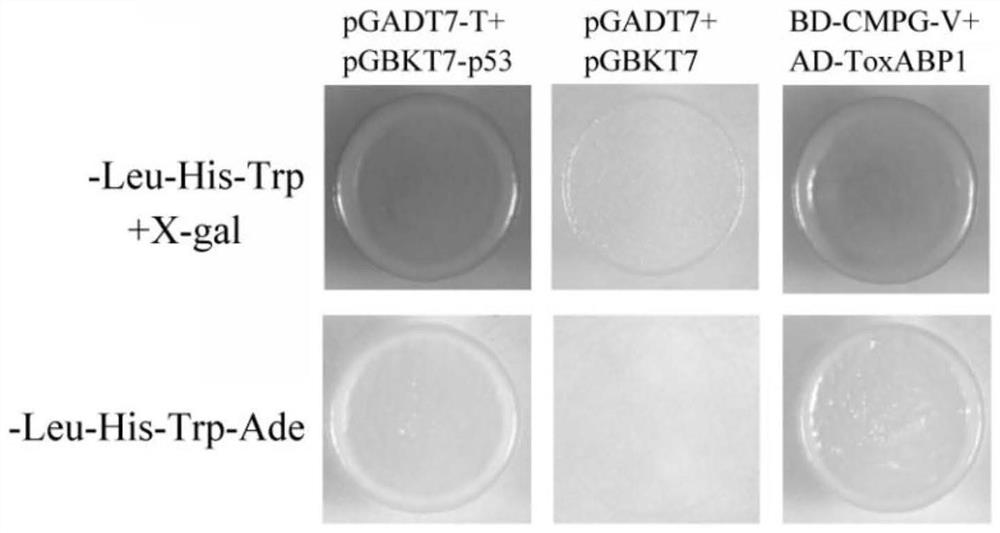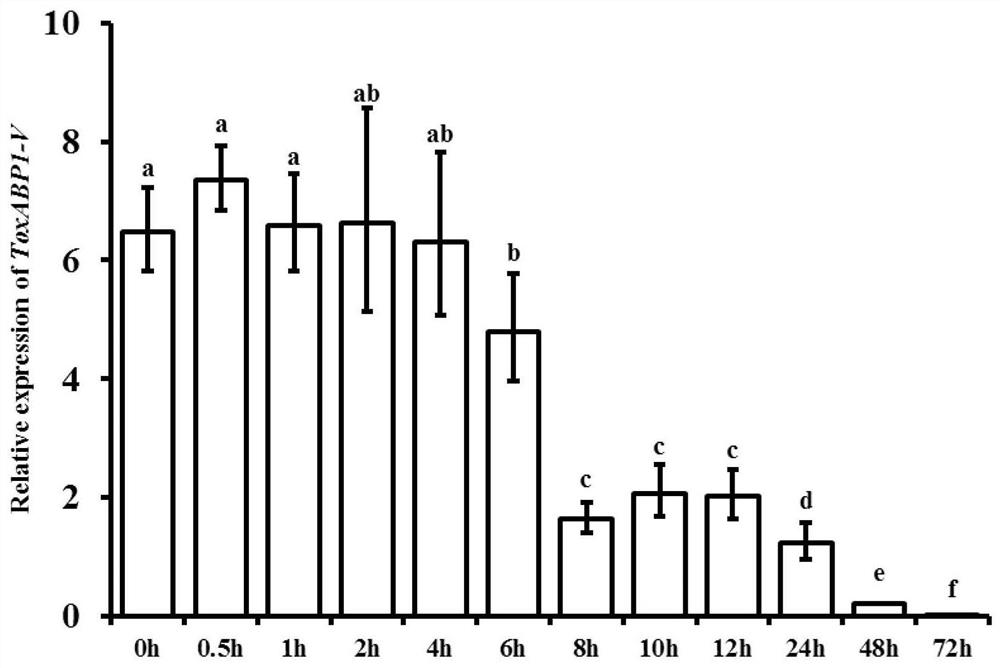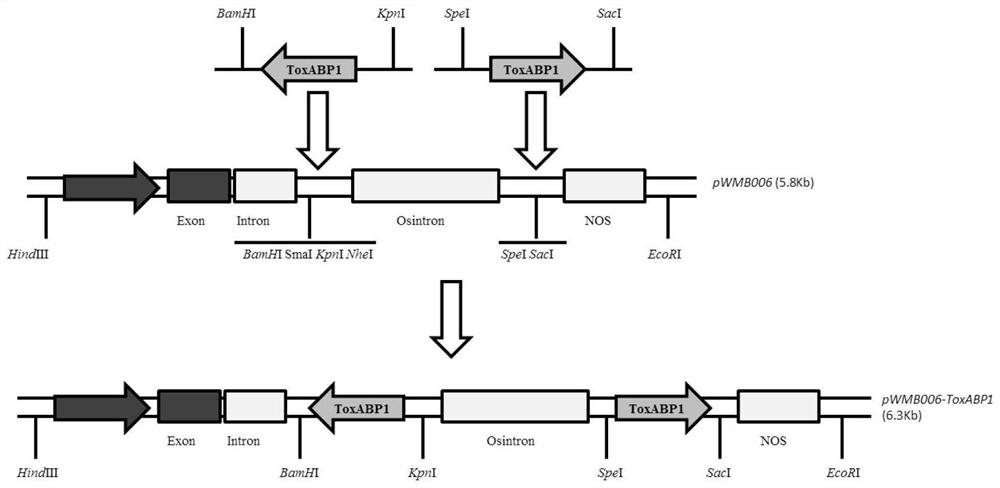A chloroplast positioning gene toxabp1-v and its application
A toxabp1-v, gene technology, applied to the chloroplast localization gene ToxABP1-V and its application fields, can solve the problems of environmental pollution, increase of manpower, material resources and the like
- Summary
- Abstract
- Description
- Claims
- Application Information
AI Technical Summary
Problems solved by technology
Method used
Image
Examples
Embodiment 1
[0023] Example 1 Screening of CMPG1-V interacting proteins by yeast two-hybrid and cloning of ToxABP1-V gene
[0024] CMPG1-V is a powdery mildew resistance-related gene located on diploid T. villosa 6V cloned by the Institute of Cytogenetics, Nanjing Agricultural University (references: Zhu, Y., Li, Y., Fei, F., Wang , Z., Wang, W., Cao, A., Liu, Y., Han, S., Xing, L., Wang, H., Chen, W., Tang, S., Huang, X., Shen ,Q.,Xie,Q.,and Wang,X..E3ubiquitin ligase geneCMPG1-V from Haynaldia villosa L.contributes topowdery mildew resistance in common wheat(Triticum aestivum L.).The PlantJournal.2015.84,154-168), with CMPG1-V was used as bait, and the yeast two-hybrid cDNA library was screened by polyethylene glycol-lithium acetate transformation method to obtain an interacting gene of CMPG1-V ( figure 1 ). The interaction gene was sequenced, and the sequence encoded a C-terminal 186 amino acids of ToxinA binding protein1, and homologous cloning primers P1 (CAATAGCCTTTCCTCGCACCTG, SEQ...
Embodiment 2
[0025] Example 2 ToxABP1-V gene is induced by powdery mildew expression characteristics
[0026] The powdery mildew-resistant wheat seeds (references: Qi Lili, Chen Peidu, etc., New source of resistance to powdery mildew in wheat—gene Pm21, Acta Crops, 1995, 21(3):257-262) were sown in a petri dish to germinate , transplanted to pots after dew whitening (isolated with cylindrical transparent plastic sheets around, and closed with filter paper at the top to form an environment without powdery mildew). At the three-leaf stage, shake off the fresh spores of Nanjing local mixed powdery mildew cultured on the susceptible variety Sumai No. 3 on the seedlings of A. After being inoculated with powdery mildew, the wheat tufting continued to be cultured at 16°C. Samples were taken at 0h, 0.5h, 1h, 2h, 4h, 6h, 8h, 10h, 12h, 24h, 48h, and 72h after inoculation, and stored in a -70°C refrigerator for later use. TRIZOL (Invitrogen) was used to extract RNA from the leaves of A. villosa induc...
Embodiment 3
[0030] Example 3 Using single cell silencing method to transfer ToxABP1-V gene RNAi vector into wheat leaves
[0031] The single-cell transient silencing method is a reliable and rapid method for identifying gene functions (reference: Schweizer, Pokorny et al. A Transient Assay System for the Functional Assessment of Defense-Related Genes in Wheat Molecular Plant-MicrobeInteractions.1999,12:647 -654). In this study, the single-cell instantaneous silencing method was used to wrap the plasmid DNA on the outer layer of metal particles, and the metal particles were bombarded to the epidermal cells of wheat leaves with the help of a gene gun. It has powdery mildew resistance function.
[0032] The procedure for encapsulating carrier DNA and metal particles is as follows:
[0033] Preparation of tungsten powder: Weigh 30mg of tungsten powder into a 1.5ml eppendorf tube, add 1ml of 70% alcohol, vortex for 3-5min and then let stand for 15min to completely precipitate the gold powder...
PUM
 Login to View More
Login to View More Abstract
Description
Claims
Application Information
 Login to View More
Login to View More - R&D
- Intellectual Property
- Life Sciences
- Materials
- Tech Scout
- Unparalleled Data Quality
- Higher Quality Content
- 60% Fewer Hallucinations
Browse by: Latest US Patents, China's latest patents, Technical Efficacy Thesaurus, Application Domain, Technology Topic, Popular Technical Reports.
© 2025 PatSnap. All rights reserved.Legal|Privacy policy|Modern Slavery Act Transparency Statement|Sitemap|About US| Contact US: help@patsnap.com



